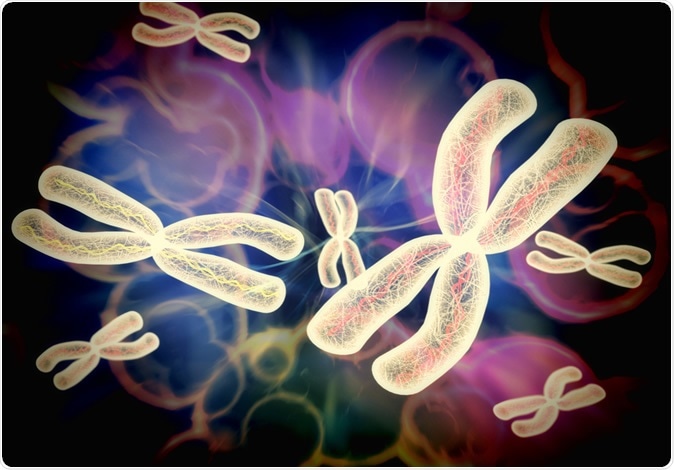
Chromosomes X
In a paper published in Genome Research, the team demonstrate a method for X chromosome reactivation, which has significant implications for the development of therapeutic interventions for illnesses linked to malfunction of X chromosome linked genes.
Rett syndrome is usually not diagnosed until the characteristic difficulties set in in childhood. People with Rett syndrome typically will experience difficulty to perform motor functions, trouble walking, and often have intellectual disabilities, slowed brain growth, and an inability to speak.
The syndrome affects girls almost exclusively, and this is because of how it impacts the X chromosome. Females have two X chromosomes, but in each cell only one is activated. During embryonic development the decision is made, one chromosome is activated and the other is inactivated.
In people with Rett syndrome, once this selection has been made around 50% of the genes expressed are defective. The reason that men don’t suffer with the syndrome is because they only have one X chromosome, and therefore with no healthy gene on the other chromosome to compensate they usually die before birth.
Pasque’s team of scientists recognized that in people with Rett syndrome, the cells which use the defective gene still have healthy copies, but they are just switched off. Their aim was to uncover the mechanism for successfully switching these genes back on, in order to develop treatments from the understanding of how to achieve this. Disorders caused by expressions of faulty genes could theoretically be counteracted by switching the healthy ‘back-up’ genes back on.
X chromosome reactivation
Once reprogrammed into iPS cells, the team observed that both X chromosomes became active once more. Around 200 different X-linked genes were monitored throughout the duration of the study, and the results revealed that this reactivation is a gradual process. It was also found that the speed of reactivation was different depending on the gene being studied. For some genes significant amounts of time were necessary for reactivation, and others happened more instantly. The team theorized that this difference in reactivation speed is related to the location of the gene on the X chromosome, as well as the role of enzymes and proteins.
Future therapeutic possibilities
With this revolutionary understanding gained of how X chromosome reactivation works, there is great potential for developing therapies for X chromosome linked disorders. It won’t be a ‘one size fits all’ scenario, each therapy will need to be specifically designed for each disorder. In terms of the next steps to developing a cure for Rett Syndrome, the team have stated that they need to next figure out how the mechanism could work for a single gene, they also need to develop a method for safely doing this in patients, and it is also essential to develop a method for targeting the right brain cells.At this point, three factors involved in X chromosome reactivation have been highlighted, and the team will continue their work by running experiments to understand their precise role. This means it may be at least a few years before we see new therapies being trialed in humans.
Journal reference:
Janiszewski A, Talon I, Chappell J, Collombet S, Song J, De Geest N, To SK, Bervoets G, Marin-Bejar, Provenzano C, Vanheer L, Marine JC, Rambow , Pasque V, Genome Res. 2019 Sep 12. doi: 10.1101/gr.249706.119. Dynamic reversal of random X-Chromosome inactivation during iPSC reprogramming., https://www.ncbi.nlm.nih.gov/pubmed/31515287 and https://genome.cshlp.org/content/early/2019/09/10/gr.249706.119






No comments
Post a Comment